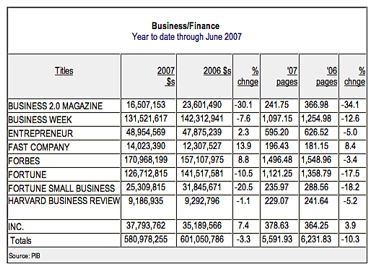You say you’re feeling down, bunky, because everyone seems to have a Facebook app but you? Well, got a web site? Then, perk up, son! Because you are well on your way to having a social app — one that’ll actually run on a whole bunch of social networking sites that have at least as much traffic as Facebook — and maybe even on Facebook itself soon. At least that’s what Marc Andreessen, founder of social-networking platform Ning, has to say on his blog post today.
It’s all thanks to the "Open Social" spec set to be announced tomorrow by Google, which says it already has about a dozen partners, including Hi5, LinkedIn, Ning,
Friendster, Salesforce.com, and Oracle. See this Wall Street Journal story (actually dated tomorrow!) and this one in the New York Times, which was published today.
So, how can you transform your web site into an "Open Social" app? Andreessen says it’s even easier than developing a Facebook app. He says you "just take your current HTML and Javascript front-end pages and create a version of those pages that use the Open Social API."
Andreessen believes web site owners will soon begin maintaining multiple sets of front-end pages for their web sites, in order to get "maximum distribution across the largest number of users." And he says it’s easy. They’ll have a single back-end, but multiple sets of front-end pages. Here’s how he defines what those multiple sets will be:
• One set of standard HTML and Javascript pages for consumption by normal web browser.
• Another set of HTML and Javascript pages that use the Open Social API’s Javascript calls for consumption with Open Social containers/social networks.
• A third set of pages in FBML (Facebook Markup Language) that use Facebook’s proprietary APIs for consumption within Facebook as a Facebook app.
• Perhaps a fourth set of pages adapted for the Apple iPhone and/or other mobile devices.
"The overwhelming good news here," said Andreessen in his blog post, "is that these pages can all be served and serviced by the same back end code."
I think this "Open Social" spec is big news. It’s something I know a lot of insiders have been been thinking about, at least in the back of their minds, since the Facebook juggernaut took off some five months ago. Walled gardens — proprietary platforms — just don’t last on the Internet. Like my buddy PXLated said in a previous comment, "The Internet just routes around ’em." Indeed. Let the party begin….
UPDATE (11/1): Marc Andreessen did another very informative blog post with a screen cast and screenshots showing how the Open Social spec can be implemented, using three actual Ning social networks as examples.
 On the afternoon of the second day at Structure, I had set up an appointment to interview the founder and CEO of a growing cloud enabler, Zuora. I'd met Tien a couple of times before — last saw him at another cloud conference, back in May, the AlwaysOn "OnDemand100" event. Tien founded Zuora after nine years at Salesforce.com — he was one of the “original forces” there, joining in 1999 as the 11th employee.
On the afternoon of the second day at Structure, I had set up an appointment to interview the founder and CEO of a growing cloud enabler, Zuora. I'd met Tien a couple of times before — last saw him at another cloud conference, back in May, the AlwaysOn "OnDemand100" event. Tien founded Zuora after nine years at Salesforce.com — he was one of the “original forces” there, joining in 1999 as the 11th employee.  (More about Tien here at the Zuora management page. He even served as CMO of Salesforce at one time!)
(More about Tien here at the Zuora management page. He even served as CMO of Salesforce at one time!) 

 individual websites to do global broadcasting.” What’s interesting now, Jeremy said, is that his firm is encountering an incredible willingness to experiment” (presumably by the traditional video distribution businesses, and by video producers). Why? “Out of fear, to pursue new revenue opportunities, just to stay out in front.” Esther asks what friction he’s seeing…. “It’s similar to the early days of e-commerce,” he said, “where manufacturers worried about going direct, then ended up discovering that blended distribution worked best. It’s the same now.” When asked what challenges he sees, Leonard Liu of Augmentum, whose firm is providing software development services for U.S. firms via a staff of 450 in China, says the challenges are many, including language. “But China is the next big player” in this space, he said. “We’ve seen in India what can happen. But it takes a true understanding of China — for example, the young people are different than the old — as far as how the cultures work together.” Liu said 60% of what his firm does is total product development, “from beginning to end.” Intel is one big customer. And how does Microsoft react, now that it isn’t such a target, Esther asked of the fourth panelist. “How can we marry all this friction-free software to the Windows environment,” was his obvious first answer. “But we see many opportunities — advertising, subscription models, Office Live. This is an exciting time, now that we’re unleashed to an extent. We think we’re responding well to what people want and don’t want.”
individual websites to do global broadcasting.” What’s interesting now, Jeremy said, is that his firm is encountering an incredible willingness to experiment” (presumably by the traditional video distribution businesses, and by video producers). Why? “Out of fear, to pursue new revenue opportunities, just to stay out in front.” Esther asks what friction he’s seeing…. “It’s similar to the early days of e-commerce,” he said, “where manufacturers worried about going direct, then ended up discovering that blended distribution worked best. It’s the same now.” When asked what challenges he sees, Leonard Liu of Augmentum, whose firm is providing software development services for U.S. firms via a staff of 450 in China, says the challenges are many, including language. “But China is the next big player” in this space, he said. “We’ve seen in India what can happen. But it takes a true understanding of China — for example, the young people are different than the old — as far as how the cultures work together.” Liu said 60% of what his firm does is total product development, “from beginning to end.” Intel is one big customer. And how does Microsoft react, now that it isn’t such a target, Esther asked of the fourth panelist. “How can we marry all this friction-free software to the Windows environment,” was his obvious first answer. “But we see many opportunities — advertising, subscription models, Office Live. This is an exciting time, now that we’re unleashed to an extent. We think we’re responding well to what people want and don’t want.”
Recent Comments